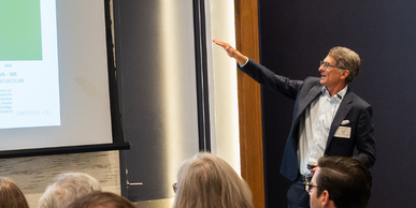Introduction
We expect bull market conditions to emerge for real estate secondaries out of the turmoil in the broader markets. Higher interest rates are causing declining values and liquidity issues for both general partners (GPs) and investors (LPs). GPs need capital to fund the gap between their current loan balances and the refinancing proceeds they can obtain in today’s significantly higher interest rate environment, and to complete value-added projects on their existing assets. The recent spike in interest rates has caused property values and therefore property sales activity to decline, resulting in declining distributions to LPs that they had counted on to fund their other investment commitments and their institutional obligations. These factors should drive a rich opportunity for secondary investors to provide the capital to solve GPs’ and LPs’ liquidity issues.
By way of background:
- After the Global Financial Crisis (GFC), the real estate secondaries market developed a more broadly accepted portfolio and liquidity management tool for LPs.
- The GP-led secondaries market commenced with recapitalizations of liquidity constrained real estate vehicles during the GFC, and as the market recovered, it evolved to meet other GP liquidity needs such as for fund continuation vehicles and platform expansions.
The funding gap
In the current environment, leveraged owners will need additional liquidity to avoid selling assets amid falling prices in two main ways.
- When their loans mature, higher interest rates will cause their refinancing proceeds to be markedly smaller than the payoff amounts of their existing loans. The owner must fund the gap, give the asset back to the bank, or sell in the open market. This “cash in” situation is the opposite of the “cash out” refinancings that real estate owners enjoyed as interest and cap rates declined in prior years.
- Even without imminent debt maturity, floating rate borrowers will need to fund higher interest costs, margin calls related to hedges, or both. Replacing expiring hedges, which is required by many loan documents, has become quite expensive. Lenders’ ability to be flexible with these provisions is limited in this environment of falling values, their ability to reinvest their capital into higher returning assets and regulatory pressures.
In both situations, rising project costs, common in this inflationary environment, and leasing challenges, common in a slowing market, tend to increase the need for capital infusions.
Non-core private real estate GPs, including many sponsors of value-added and opportunistic vehicles, are likely to face liquidity challenges in their portfolios. These vehicles normally employ meaningful leverage, and the transitional nature of the buy, fix and sell strategy means that they often use floating rate debt, which is vulnerable to interest rate increases, and thus increases the risk of liquidity challenges.
Three ways to resolve a funding gap:
- Fund it out of pocket. If the existing owners judge the asset to be worth the follow-on investment and have the capital, this is the simple solution. It is reasonable to expect that reserves and a meaningful amount of the dry powder in partially invested funds will be deployed in this manner. If the vehicle does not have the capital, it can be difficult to raise from existing investors, particularly when they may be facing their own liquidity issues from the denominator effect and delayed distributions from their other private markets investments.
- Raise it through a recapitalization. Conventional debt funding for these types of recapitalizations is relatively scarce, especially for comprehensive solutions for funds and other multi-asset investment vehicles. This leaves GP-led secondaries, which include recapitalizations, as an important source of liquidity. GP-led secondaries solve the GP’s problem of either having to come up with the capital to fund the gap, or to walk away from good assets that can deliver returns in the recovery period. These recapitalizations can be structured as common equity and dilute the existing investors, as preferred equity senior to the existing investors in the capital stack, or a myriad of other ways. Funding gaps will affect GPs and their assets across the quality spectrum which should leave secondaries investors with a rich pipeline of opportunities. .
- Sell the asset. Sell the asset in the open market or turn it over to the lender, who will sell it. This is necessary if the owner or their LPs are either unable or unwilling to fund the gap.


